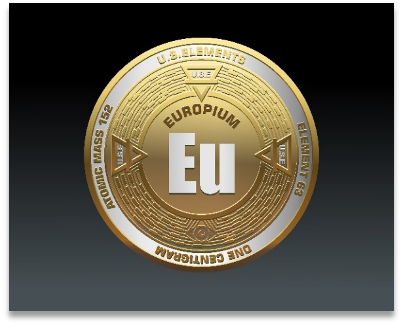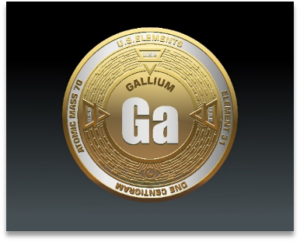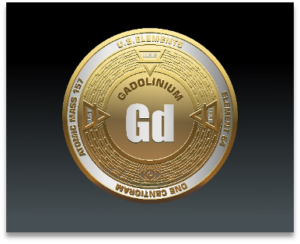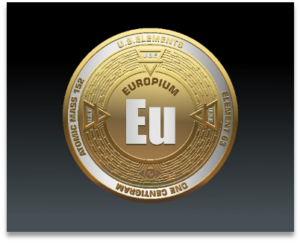Number thirteen in our ongoing exploration of America’s critical minerals brings us to europium—the rare earth element that literally lights up our world. Europium is responsible for the vibrant red and blue phosphors found in televisions, computer screens, and LED lighting. Without europium, the rich, high-definition displays we rely on daily would be a thing of the past. But its importance extends beyond entertainment screens; europium is also a key component in anti-counterfeiting measures for Euro banknotes and U.S. currency, ensuring economic security in ways most people never consider.
Why the U.S. Needs It
Europium plays a vital role in modern technology, defense, and clean energy sectors. It is used extensively in fluorescent and LED lighting, medical imaging devices, and even nuclear reactor control rods due to its neutron absorption capabilities. In defense applications, europium is crucial for advanced optical equipment, laser systems, and satellite communications. Without a stable supply, industries that rely on precision imaging, energy efficiency, and secure financial transactions could face significant setbacks.
Where It’s Found Domestically
Europium, like other rare earth elements, is not commonly found in concentrated deposits. Instead, it is typically extracted as a byproduct from bastnäsite and monazite minerals, which are mined for broader rare earth elements. The Mountain Pass mine in California is currently the most notable U.S. source of rare earths, though europium extraction remains limited. Research into alternative domestic sources and improved refining techniques is underway to reduce reliance on foreign suppliers.
Economic Realities
As a high-demand rare earth element, europium commands a significant price on the global market. The element’s limited production, coupled with growing demand for energy-efficient lighting and secure identification technologies, makes it a critical commodity. China currently dominates europium supply, accounting for the vast majority of global production, leaving the U.S. vulnerable to supply chain disruptions.
Processing and Technological Innovations
Extracting europium from rare earth ores requires sophisticated separation techniques, including solvent extraction and ion-exchange methods. Recent advancements in hydrometallurgical processes have improved efficiency, and researchers are exploring bioleaching and alternative recycling methods to recover europium from waste electronics and spent phosphors. Such innovations could provide a more sustainable domestic supply.
Abundance and Waste Recovery Potential
Europium is relatively scarce, occurring at about 2 parts per million in the Earth’s crust. However, recovery from fluorescent lamp phosphors, electronic waste, and industrial residues presents a viable avenue for increasing supply without additional mining. Recycling initiatives could help meet future demand while reducing environmental impact.
Time to Market
Mining and refining europium is a time-intensive process that can take several years from exploration to production. Developing new sources and refining methods requires extensive regulatory approvals and infrastructure investment. However, with a growing emphasis on securing domestic supply chains, U.S. initiatives are accelerating efforts to reduce dependence on imports.
Current and Future Applications
Today, europium is best known for its role in display technologies, currency security features, and nuclear reactor control systems. Future applications could include quantum computing, advanced laser systems, and next-generation lighting solutions that push the boundaries of energy efficiency. As technology continues to evolve, europium’s role is expected to expand in ways we have yet to fully envision.
Impact on Everyday Life
From the smartphones in our pockets to the banknotes in our wallets, europium touches everyday life in ways most people never realize. Its contributions to medical imaging, energy-efficient lighting, and secure transactions make it an unsung hero of modern convenience and security.
Consequences of Supply Shortages
A lack of europium could have far-reaching effects, particularly in the electronics, defense, and financial security sectors. Supply chain disruptions could lead to increased costs for critical technologies and hinder advancements in clean energy and national defense systems. Ensuring a reliable domestic supply is essential to maintaining technological leadership and economic stability.
Import Dependence
The U.S. relies heavily on imports from China for europium, exposing the country to potential supply chain vulnerabilities. Efforts to establish domestic refining capabilities, diversify supply chains, and invest in recycling technologies are crucial to reducing this dependency.
The Path Forward
As we continue our journey through America’s critical minerals, europium serves as a clear reminder of the need for resource independence. Investing in domestic mining, refining innovations, and recycling initiatives will be key to securing a stable supply of this indispensable element. The future of high-definition technology, secure financial systems, and advanced defense applications depends on it.
Stay tuned as we continue exploring the critical minerals shaping America’s future.






